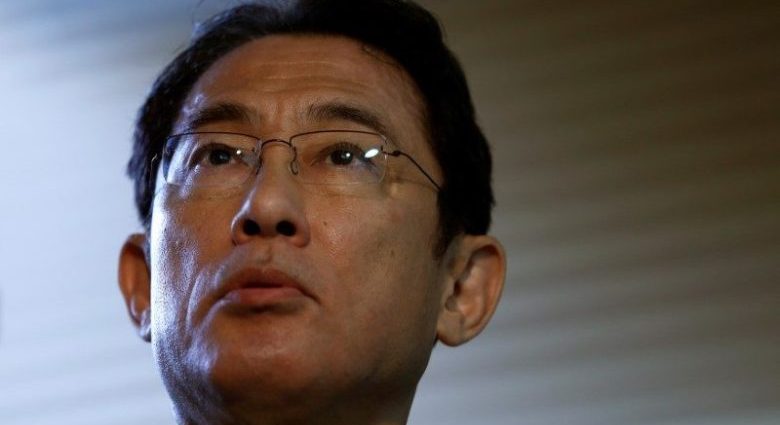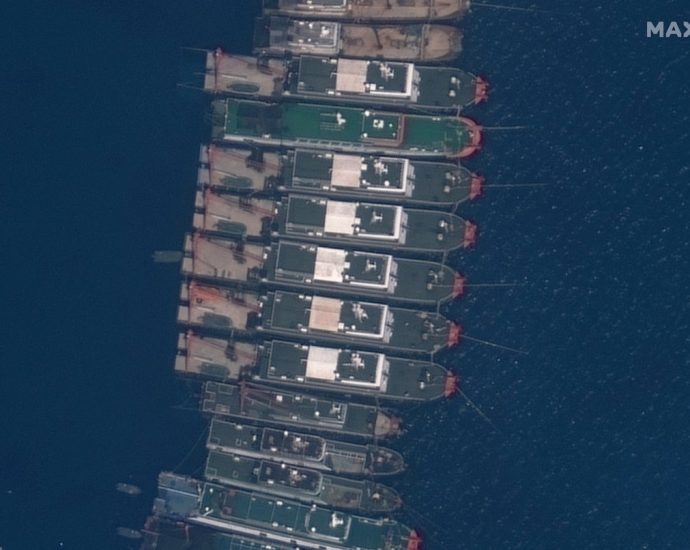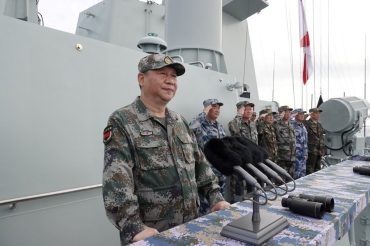Germany to seize Japan’s third-biggest economy crown
TOKYO – Thirteen years on, the Japanese still haven’t quite gotten over China surpassing their economy in gross domestic product (GDP) terms. Now here comes Germany with a fresh blow to the national psyche.
This week, the International Monetary Fund calculated that Germany’s nominal GDP is on track to surpass Japan’s this year. That would push Japan from No 3 to No 4 globally.
If you think Prime Minister Fumio Kishida’s approval ratings are low now – a mere 29% – just wait until this changing of the economy guard makes banner headlines. It will remind 126 million people that the ruling Liberal Democratic Party continues to dither as Japan’s global footprint shrinks.
Economists are skilled at finding creative ways to explain away such inflection points. We’re only talking about GDP in US dollar terms, some argue. Others say vagaries surrounding changes in prices of goods and services muddy the picture.
And to this day, Tokyo stresses per capita income levels — which are markedly higher in Japan — are the most important metric vis-a-vis China’s economy.
But there’s no masking that the fall from No 3 to No 4 speaks to the weakness of the Japanese economy and the collateral damage from a now backfiring 25-year-old weak yen policy.
It’s worth noting, too, that German Chancellor Olaf Scholz’s economy isn’t exactly thriving in the homestretch to 2024. The IMF thinks growth in the US, UK, France and Spain will top Germany over the next five years.
In mid-August, The Economist argued Berlin had gone “from European leader to laggard” and asked, “is Germany once again the sick man of Asia?” Ten days later, a Wall Street Journal headline proclaimed “Germany Is Losing Its Mojo. Finding It Again Won’t Be Easy.”
Economists can debate where Germany is, circa late 2023. But it’s hard to refute that from the mid-2000s to the late 2010s, Berlin showed Tokyo how it’s done in terms of thriving economically despite strong exchange rates.
German executives and policymakers “didn’t complain about exchange rates – they figured it out and restructured accordingly,” explains economist Stephen Jen, managing partner at SLJ Macro Partners. What’s more, as the global economy grew increasingly chaotic after the mid-2000s, Germany “didn’t fight it,” Jen notes. Berlin “went with it” and raised its economic game accordingly.
Over time, Germany – then under the leadership of Gerhard Schroder followed by Angela Merkel – found ways to innovate and adapt to the fast-changing forces of globalization despite high labor costs and financial crises.
Better than most peers, Germany balanced tensions between increasing competitiveness and maintaining maximum employment, even amongst the “Mittelstand,” the medium-sized enterprises that long formed the backbone of German industry.

In 2014, economist Sebastian Paust probably didn’t know how right he was when arguing in an Asian Development Bank report that the Mittelstand was a “model” not just for Japan but emerging Asian economies, too.
If a “full” German Mittelstand-like “success story is the goal,” Paust explains, “reform steps must be taken to create a high-standard legal and institutional system that is complemented by a stable and sufficiently decentralized and participative political system combined with a strong entrepreneurial spirit toward social responsibility.”
Though it boosted exports in the late 1900s, Japan’s weak yen policy deadened the nation’s entrepreneurial animal spirits. Since then, a revolving door of leaders leaned on a weak yen to juice growth. That rid the last 13 governments of the urgency to boost competitiveness, recalibrate growth engines and welcome disruption.
Year after year, the Bank of Japan came under increasing pressure to ease further — to push a quantitative easing (QE) experiment that began between 2000 and 2001 into new monetary frontiers.
Things got supercharged in 2013 when Haruhiko Kuroda was named BOJ governor. The central bank went on a multi-year buying binge, cornering the government bond market. Stocks, too, through epic buying of exchange-traded funds. By 2018, the BOJ’s balance sheet topped the size of Japan’s entire economy — then roughly US$4.9 trillion.
Yet the last decade of hyper-easing merely exacerbated Tokyo’s all-liquidity-no-reform problem. It generated record corporate profits, but it failed to incentivize CEOs to boost wages, invest big in innovation, increase productivity or take risks on promising new industries.
A weak exchange rate provided 25 years of modern capitalism’s most generous corporate welfare, which ended up holding Japan back. Why would CEOs exert themselves restructuring, recalibrating or reimagining industries that once showed Apple, Samsung and Tesla how it’s done when the BOJ has your back 24/7?
Prioritizing exchange rates over disruption made dominating Asia’s future industries much easier for China. And now Germany, whose officials are about to walk into Group of Seven meetings with even greater swagger.
The IMF reckons Germany’s nominal GDP will end 2024 at $4.43 trillion, topping Japan’s $4.23 trillion for Japan. This shift comes as the yen sits around 150 to the dollar — near a 33-year low — and around 160 to the euro. The yen-euro rate was last in this neighborhood in 2008 amid the global financial crisis.
What’s more, the yen is likely to slide even further. Tight labor markets and surging oil prices are upping the odds of more US Federal Reserve rate hikes, perhaps as early as next week. European Central Bank rate hikes also widened the yield gap with Japan.

“The greenback continues to draw smaller benefits from strong US data and high rate advantage than it should, likely due to its overbought status, but upside risks remain predominant,” says economist Francesco Pesole at ING Bank.
The BOJ remains in stimulus mode amid flatlining wages and slowing growth. Few observers expect much from next week’s BOJ policy meeting. At most, the BOJ might announce a modest tweak in its “yield curve control” policy. An outright tightening step, though, is becoming even less likely given Prime Minister Kishida’s fiscal policy plans.
In December, Kishida unveiled a more than 50% boost in defense spending over five years to $315 billion. Last week, he pledged to cut income taxes and corporate levies, in addition to greater assistance for childcare. This latter push comes as his government’s approval falls to record lows.
As Tokyo adds to a national debt that’s already approaching 260% of GDP, the BOJ might have to boost liquidity as opposed to withdrawing it. Kishida’s U-turn on spending will put newish BOJ Governor Kazuo Ueda in a difficult spot.
When he took the helm in April, traders everywhere expected an early pivot away from QE. Perhaps even a rate hike or two. Ueda has demurred, fearing Japan Inc isn’t ready to lose the easy money training wheels.
In the meantime, the global scene has taken a turn for the worse. The 2022 surge in energy prices related to Russia’s Ukraine invasion is now accelerating thanks to the Hamas-Israel crisis. As the gap widens between Japanese yields and those in the West, the yen may experience increased downward pressure, compounding Japan’s troubles.
As Willem Thorbecke, a senior fellow at Japan’s Research Institute of Economy, Trade and Industry, puts it: “Although a weak yen has been profitable for many Japanese firms and their trading partners, a further depreciation would be harmful. It will not increase exports of goods or key services such as tourism. It would also limit any potential increase in employment at a time when Japan needs more high-quality jobs.”
In Thorbecke’s view, further depreciation “would reduce the purchasing power of firms and consumers, and hinder their ability to import key products. For pharmaceutical goods and oil, whose imports do not decline when the exchange rate weakens, depreciation would still increase their yen costs.”
The problem is that “when the dollar costs of oil and primary commodities are already high, any further increase could swell Japan’s [current] account deficit,” Thorbecke says. “While the current value of the yen offers advantages, a further downward spiral would impose costs that exceed the benefits.”
A weak yen also can negatively affect consumer confidence. “Due to an increase in the weight of imported consumer goods, the purchasing power of households became prone to decline when the yen depreciated,” notes Wakaba Kobayashi, economist at Daiwa Research Institute.
Rather than currency management, “structural reforms that encourage innovation and productivity should be continued,” says analyst Takeshi Tashiro at the Peterson Institute of International Economics.
“Japan,” Tashiro says, “must rethink its agenda to address excess private savings and consider alternative ways to manage its savings when the private sector cannot meet demand on its own.”
Given the high level of government debt, Tashiro says, “Tokyo should also seek out the most promising investment opportunities while prioritizing alternatives to budget deficits in order to sustain demand. Low inflation in a period of yen depreciation shows that managing the economy in the face of huge private savings continues to be Japan’s major challenge.”
Asked about the IMF projections earlier this week, Japan’s Economy Minister Yasutoshi Nishimura said: “It’s true that Japan’s growth potential has fallen behind and remains sluggish. We’d like to regain the ground lost over the past 20 or 30 years. We want to achieve that through measures such as our upcoming package.”
Yet Kishida’s package would do nothing of the sort by merely treating the symptoms of Japan’s malaise, not its underlying causes.

Already, IMF data suggest Germans have reason to feel better off than their Japanese counterparts. Average German GDP per capita is roughly $52,824 versus $33,950 for Japanese households. At this point, continued yen weakness will do zero to boost Japanese living standards.
To be sure, German leader Scholz has more than his fair share of economic headaches. Last month, the Organization for Economic Cooperation and Development (OECD) warned that Germany may suffer the heaviest blows from a global slowdown.
“Germany, perhaps more than other EU economies, is affected by the slowdown in China,” says Clare Lombardelli, chief OECD economist. “It exports a lot to China, as well as imports, so it’s a combination of factors.”
While “you’re seeing weaker growth across all of Europe,” Lombardelli adds, “Germany is probably the largest example. You’re seeing the impact of inflation on real incomes. That’s been suppressing consumer demand. And you’re seeing the impact of monetary policy tightening.”
Still, Japan’s woes are enabling Germany to rise in global rankings at the worst possible moment for a Tokyo government that’s very much on the ropes. The costs of 25 years of a yen-only growth strategy have never been higher, with the slip from No 3 to No 4 perhaps just the first drop in a deeper economic fall to come.
Follow William Pesek on X, formerly Twitter, at @WilliamPesek

























